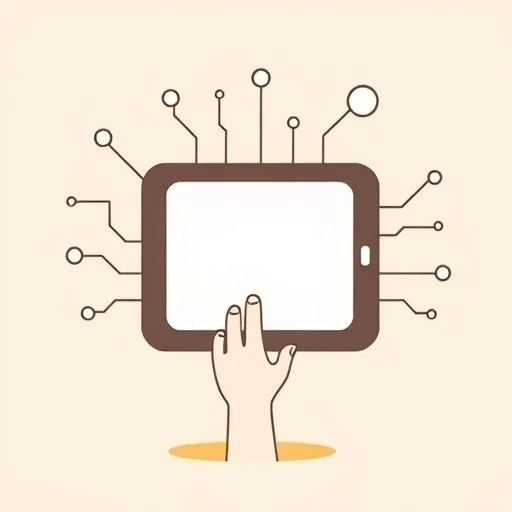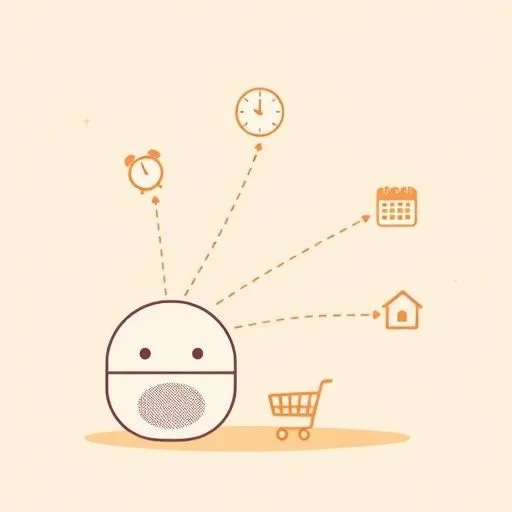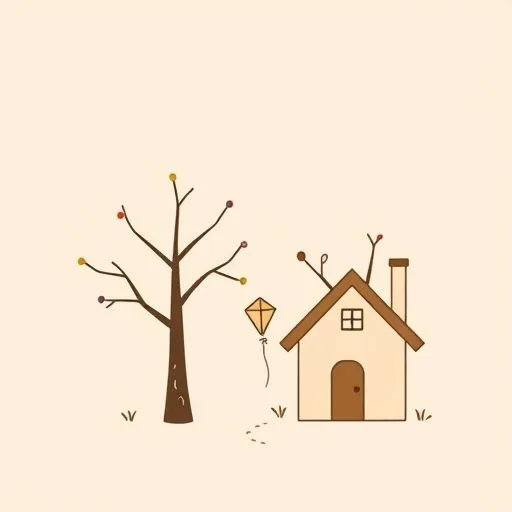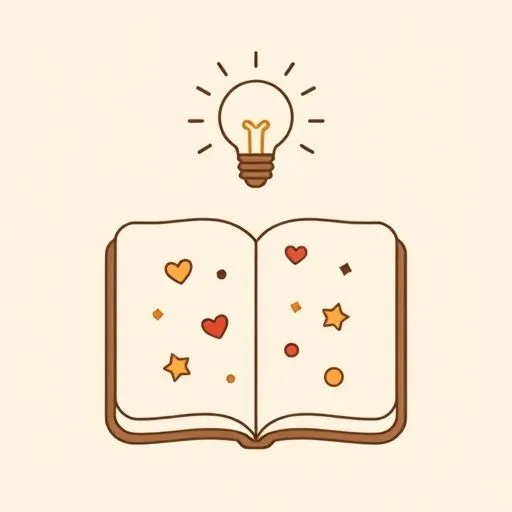
When Kids Ask About AI: Preparing for Tomorrow’s World Together
In quiet moments after morning rush, I marvel at how quickly our world is changing. Recently, my daughter asked why her drawing tablet understood her before she finished speaking. These moments remind us we’re living in the future once imagined in science books! As AI transforms nearly every aspect of life by 2026, I wonder how we’re preparing our children for this brave new world. What if I told you it’s not about complex tech lessons, but something far more beautiful and accessible?
How Can AI Helpers Like Voice Assistants Prepare Kids for the Future?

Remember when we first got those voice assistants that could barely understand our requests? Now, my daughter treats them like they’re part of the family! ‘Hey friend, can you tell me a story about dinosaurs while I build my castle?’ she’ll ask, and presto—instant entertainment! They won’t just respond to our prompts—they’ll actually anticipate our needs and take action on our behalf! Imagine a world where your family’s digital assistant already knows when to order more milk because it learned your consumption patterns, or reminds you about your daughter’s dentist appointment because it synced with your calendar. It’s like having a super-organized, never-forgetting family manager!
And guess what? This agentic AI trend we’re hearing about for 2026 is taking these helpful assistants to a whole new level.
So, how does this translate to our family life?
But here’s what gets me excited—this isn’t about replacing our role as parents. It’s about freeing up our time for what truly matters: being present with our children, sharing laughter during meals, and creating those beautiful memories that no algorithm could ever replicate. In our family, we’ve already started treating these AI helpers like digital teammates—something we guide rather than something that guides us.
We chat openly about how they work, what they can and can’t do, and always remind our little one that humans are the ones who teach these amazing helpers. It’s all about maintaining that beautiful balance between embracing technology and honoring our humanity!
How Will Physical AI Technology Change Our Children’s World?

On those weekend afternoons when we venture to a favorite neighborhood park—remember that one with the amazing slides and the perfect spot for flying kites—I can’t help but notice how technology and the physical world are already blending in ways we never imagined. My daughter will point out birds and ask me to identify them using an app, then immediately rush to draw what she saw in her nature journal.
That’s the physical AI trend we’re seeing more of these days—it’s AI that doesn’t just live on screens but moves with us in the real world! By 2026, we’ll see autonomous vehicles becoming more common, robots helping in healthcare settings, and smart devices working together to create homes that anticipate our needs.
But here’s my favorite part—this trend means more time for outdoor adventures as a family! Imagine a world where your smart home has already prepped everything for your weekend picnic—weather-appropriate clothes packed, healthy snacks ready, and directions to the perfect spot in the park already loaded on your device. More time for what truly matters: exploring together, laughing, and discovering the world through our children’s eyes.
We’re already embracing this by encouraging our daughter to be a digital creator—using tablets not just for consuming content but for making her own art, music, and stories. She’s learning that technology isn’t just something we use—it’s something we can shape and direct. That’s the superpower we want our kids to have in this AI-powered future!
Can AI Help Us Preserve Our Children’s Precious Memories?

Isn’t it funny how our brains work? I can vividly remember my daughter’s first wobbly steps on that rainy autumn afternoon, but I completely forgot to buy milk yesterday. That’s human nature—we remember the big emotions but lose the details.
Well, get ready for AI that remembers everything! The development of systems with near-infinite memory is one of the most exciting trends coming our way. Imagine being able to revisit any moment from your child’s life with perfect clarity—not just through photos and videos, but through contextual details you’ve long forgotten. It’s like having a digital ‘grandma’ who never forgets a thing!
These are the treasures that make parenting so incredibly rich! But here’s where it gets beautiful—this trend isn’t about replacing our memories; it’s about enhancing them.
We can already see this in action with apps that help us organize family photos, create digital scrapbooks, and even suggest activities based on past favorites. What if we could help our children develop their own ‘memory palaces’—digital spaces where they store and revisit their most precious learning moments and personal discoveries?
We’re encouraging our daughter to start her own digital journal, where she records not just what she did but how she felt about it. It’s teaching her the beautiful practice of reflection and helping her develop emotional intelligence that will serve her well in any future—AI-powered or not!
How Will Smaller, Specialized AI Models Benefit Our Kids?

For years, we’ve been hearing about massive AI systems that require enormous computing power and specialized knowledge to operate. But here’s the game-changer for 2026: smaller, specialized AI models that can do specific tasks incredibly well!
It’s like moving from that giant all-purpose kitchen appliance to having the perfect tool for every job—a bread maker, a rice cooker, a vegetable chopper—each doing its one thing exceptionally well. This shift toward specialized AI is actually fantastic news for parents!
Instead of overwhelming our children with information from one giant system, we can introduce them to smaller, focused AI tools that enhance specific skills and interests. Does your child love dinosaurs? There’s an AI that can create personalized dino adventures! Fascinated by space? An AI can generate custom solar system explorations!
By integrating AI into education, we’re not just preparing our kids for the future; we’re empowering them to shape it.
We’re already seeing this in action with educational apps that adapt to a child’s learning style, pace, and interests. What makes me especially excited is how this trend supports a more personalized, child-centered approach to learning—something that aligns beautifully with our parenting philosophy of following our child’s natural curiosity!
Just as we wouldn’t expect every child to learn in the same way or at the same pace, these specialized AI systems recognize that learning is not one-size-fits-all. They can provide exactly the right challenge, exactly the right support, exactly when needed.
That’s the kind of personalized attention we would all love to give our children but simply can’t do 24/7. With these specialized AI helpers, our kids get the best of both worlds—our loving guidance and the perfect digital support for their unique journey!
How Can Invisible AI Make Family Life Easier?

Have you ever noticed how the best technology is the technology you don’t even notice? Like when you’re driving and the GPS seamlessly reroutes you around traffic, or when your streaming service suggests a show your whole family will love based on your viewing habits.
That’s the beauty of seamless, intuitive technology—it works quietly in the background, making life easier without demanding our attention. That’s exactly where AI is heading by 2026! AI is becoming more integrated into our daily lives, working invisibly to enhance rather than interrupt our experiences.
It’s like having a helpful friend who anticipates your needs before you even ask. For families, this could mean homes that adjust lighting and temperature based on everyone’s preferences, learning platforms that adapt to each child’s needs in real-time, and healthcare systems that provide personalized recommendations before issues become problems.
But here’s the beautiful part—this invisible AI has the potential to free up so much of our mental bandwidth! Think about it: less time spent on administrative tasks, less mental energy consumed by decision fatigue, more space for creativity, connection, and joy.
That’s exactly what we’re seeing in our own family. We’re already using smart home features that help manage daily routines, giving us more quality time together. What if, by 2026, these technologies become so intuitive and helpful that they feel like natural extensions of ourselves?
The key is to embrace these tools while maintaining our human connections and values. Technology should serve us, not the other way around. Our daughter is learning this balance by using AI as a creative collaborator—brainstorming ideas for stories or art projects—always with the understanding that she’s the director, the AI is just her talented assistant!
As we embrace these technologies, let’s remember that the most precious moments are the ones we share with our children, filled with love and laughter.
Source: The 8 Biggest AI Trends For 2026 That Everyone Must Be Ready For Now, Forbes, 2025/09/22
